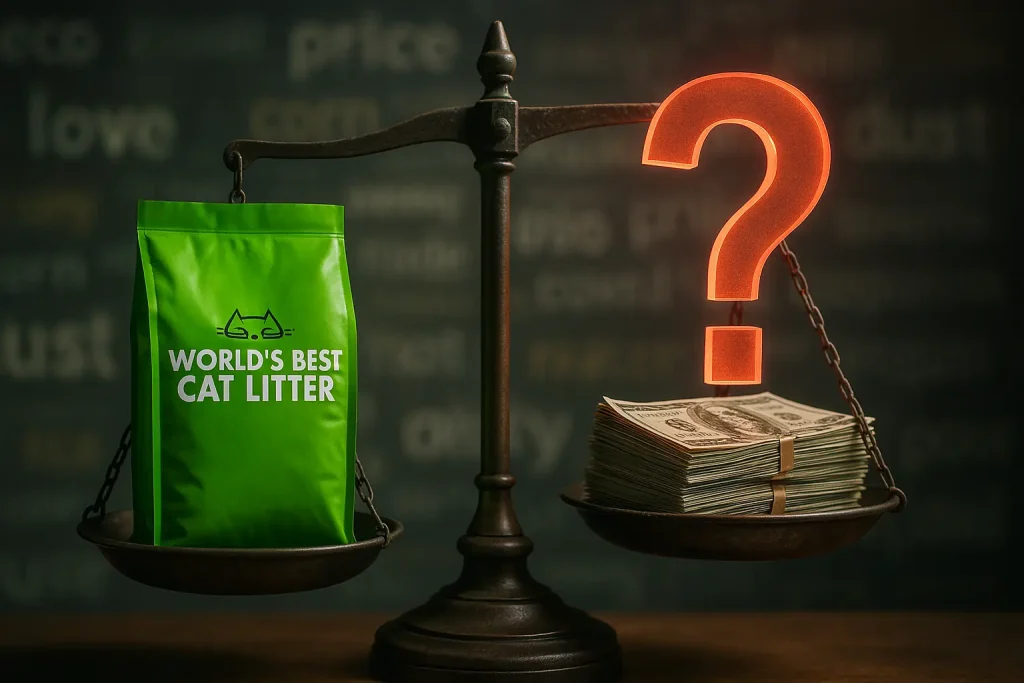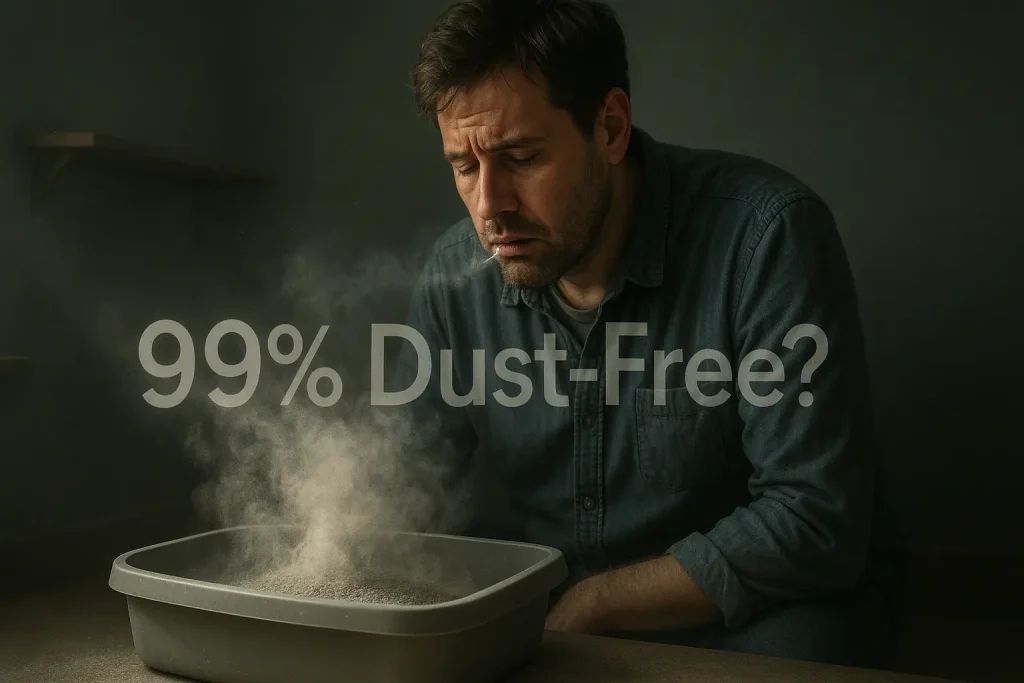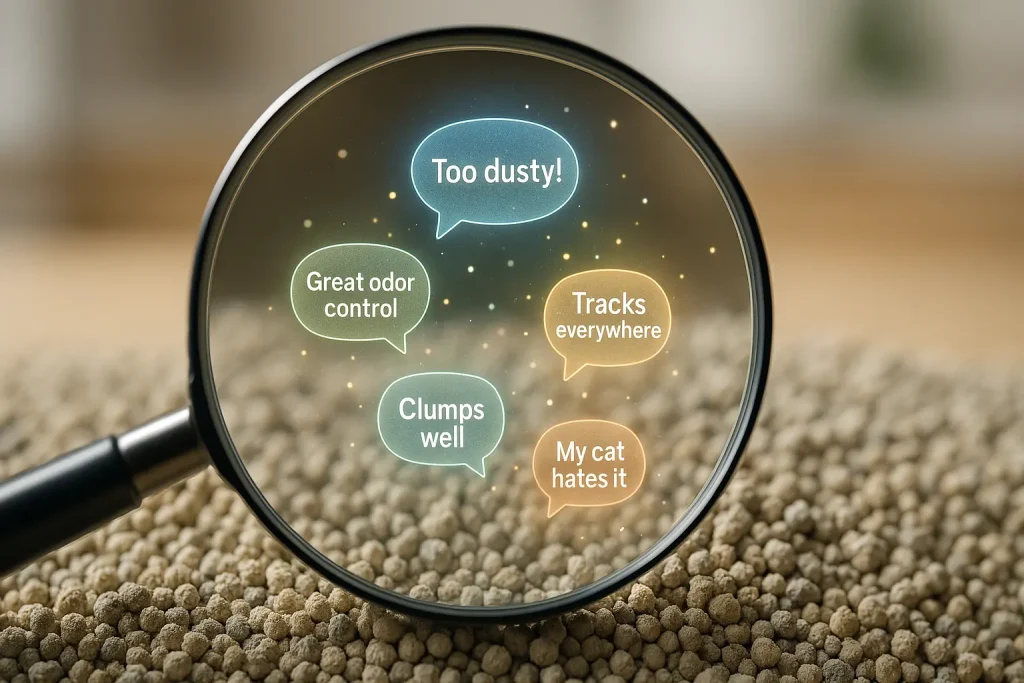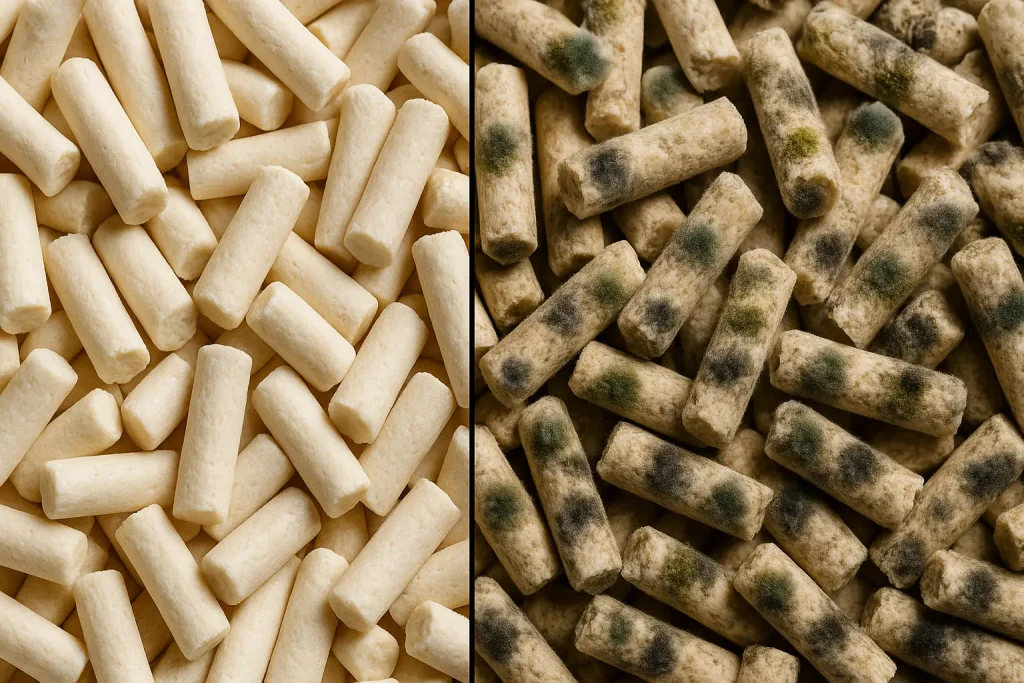The Never-Ending Battle: Why Litter Tracking Drives Us Crazy
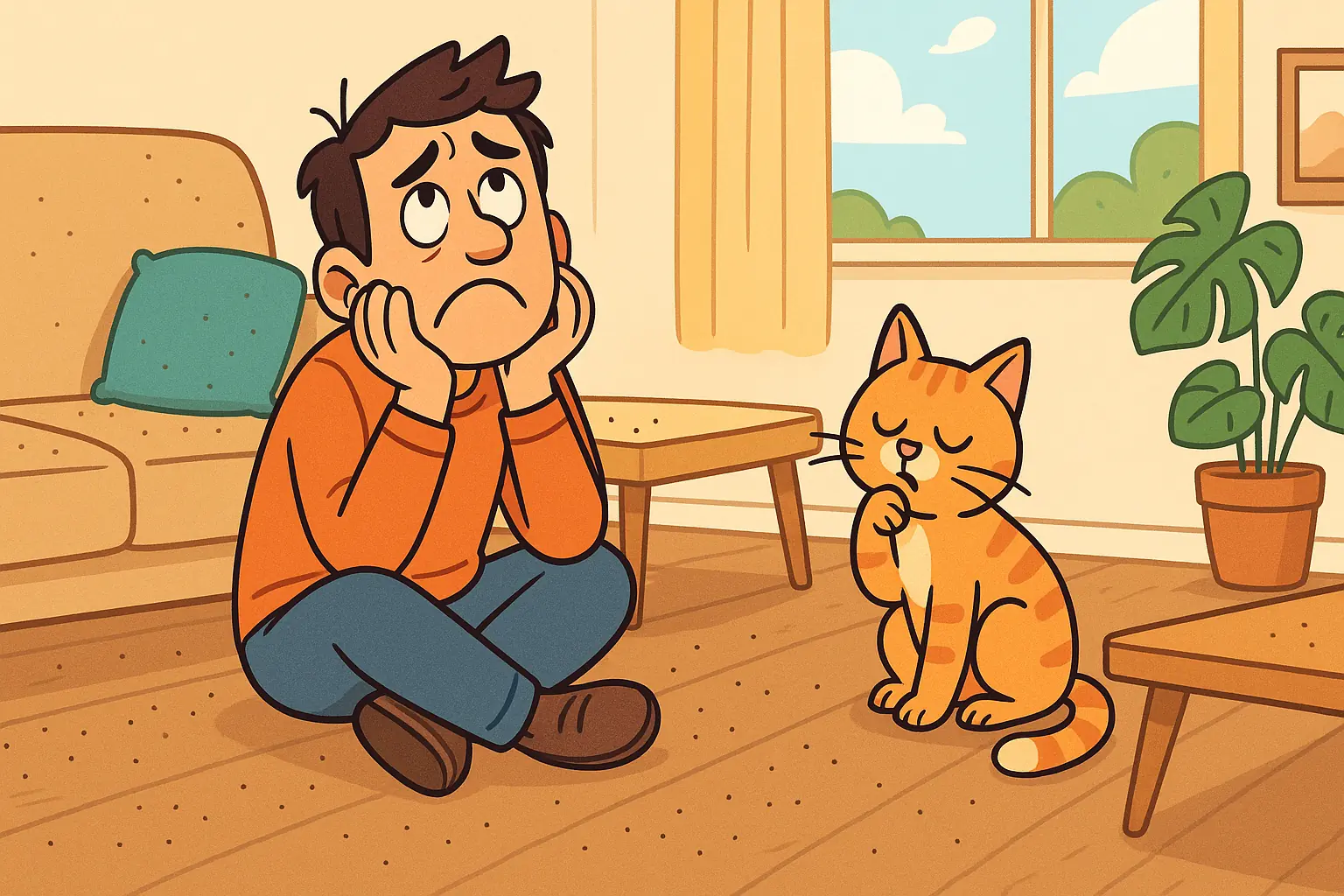
Litter granules. In your socks. On the sofa. Stepped on a stray pebble in bare feet again this morning? We understand. Cat Litter Hub's analysis of thousands of user comments confirms this daily grit is a universal cat owner frustration, a constant cleaning battle.
Consider this page your command center. We have compiled field reports from countless cat owners. These are their hard-won strategies, their user-fortified tactics for containing the scatter. This information offers real solutions, not just vague suggestions often found elsewhere.
You will discover which litter types genuinely reduce tracking, based on collective experience. We will share surprising mat effectiveness insights. You will learn about strategic box setups and simple DIY containment hacks that users swear by. Even the role of cat grooming in this fight might surprise you; practical, actionable intelligence is our promise.
Know Your Enemy: Litter Types That Are Serial Trackers (And Why Users Say So)
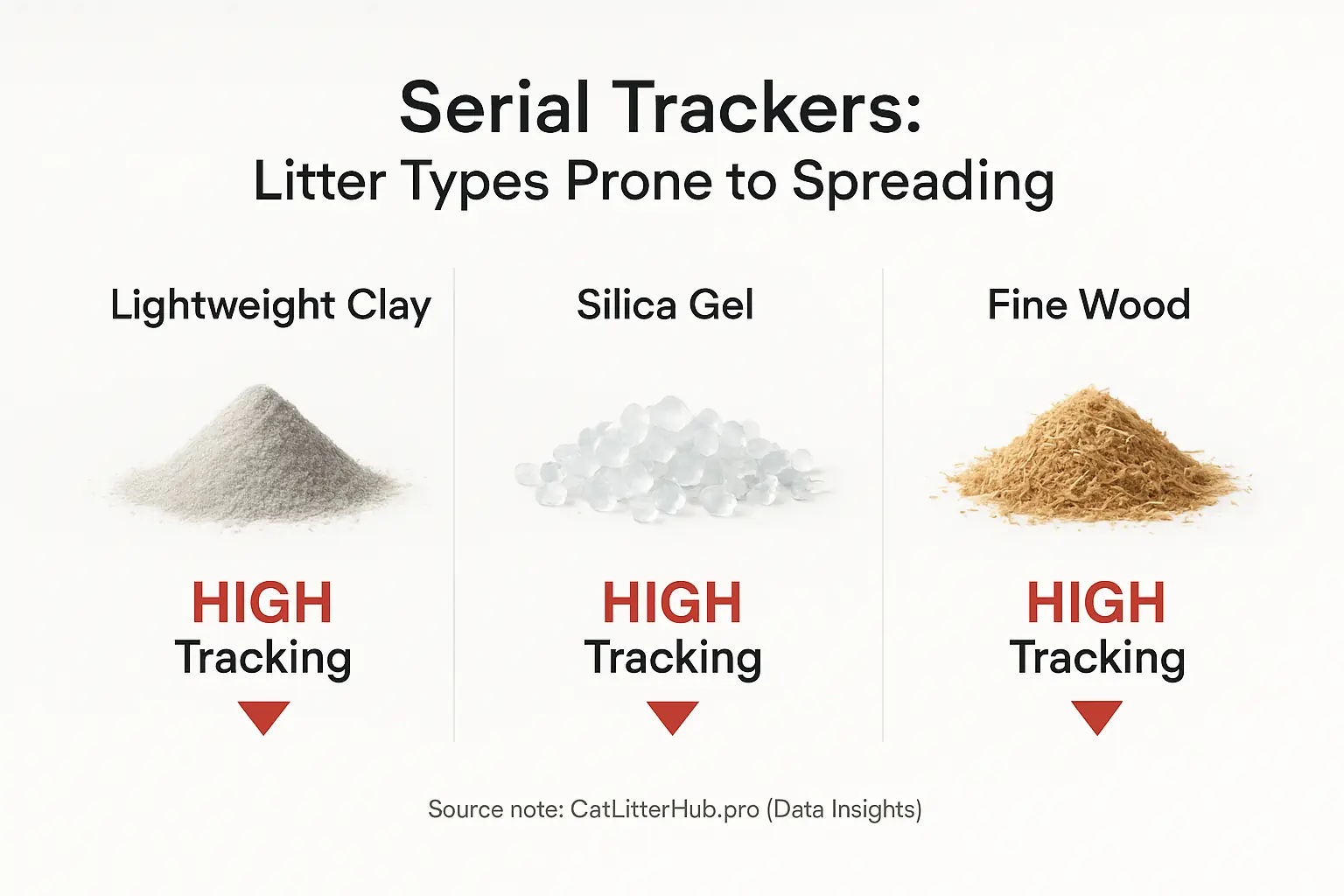
Some litters track relentlessly. User experiences clearly identify these problem products. We call them serial trackers. Their properties almost guarantee widespread mess.
Lightweight clay litters top many user complaint lists for tracking. The particles are often very fine. Owners frequently describe these tiny bits clinging to cat fur like persistent magnets. This adherence results in a frustrating, powdery film discovered on dark furniture, floors, and even bedding, far from the litter box. A dusty trail follows kitty.
Silica gel crystals present a different tracking challenge, according to numerous online discussions. Their shape can be problematic. Many users find these lightweight, often rounded beads scatter like tiny, unruly ball bearings. It's a common narrative in reviews: discovering these crystals in completely different rooms, sometimes even on other floors of the house. They travel surprisingly far.
Certain fine-textured plant-based litters also earn tracking complaints from cat owners. If the plant material, like some wood or corn crumbles, is processed into very small, light particles, users note similar issues. Some compare the fine dust to clay. Understanding these common 'tracking enemies' helps you choose better litter box defenses. Knowledge means less sweeping.
Your First Line of Defense: Litter Mat Secrets & User-Approved Champions
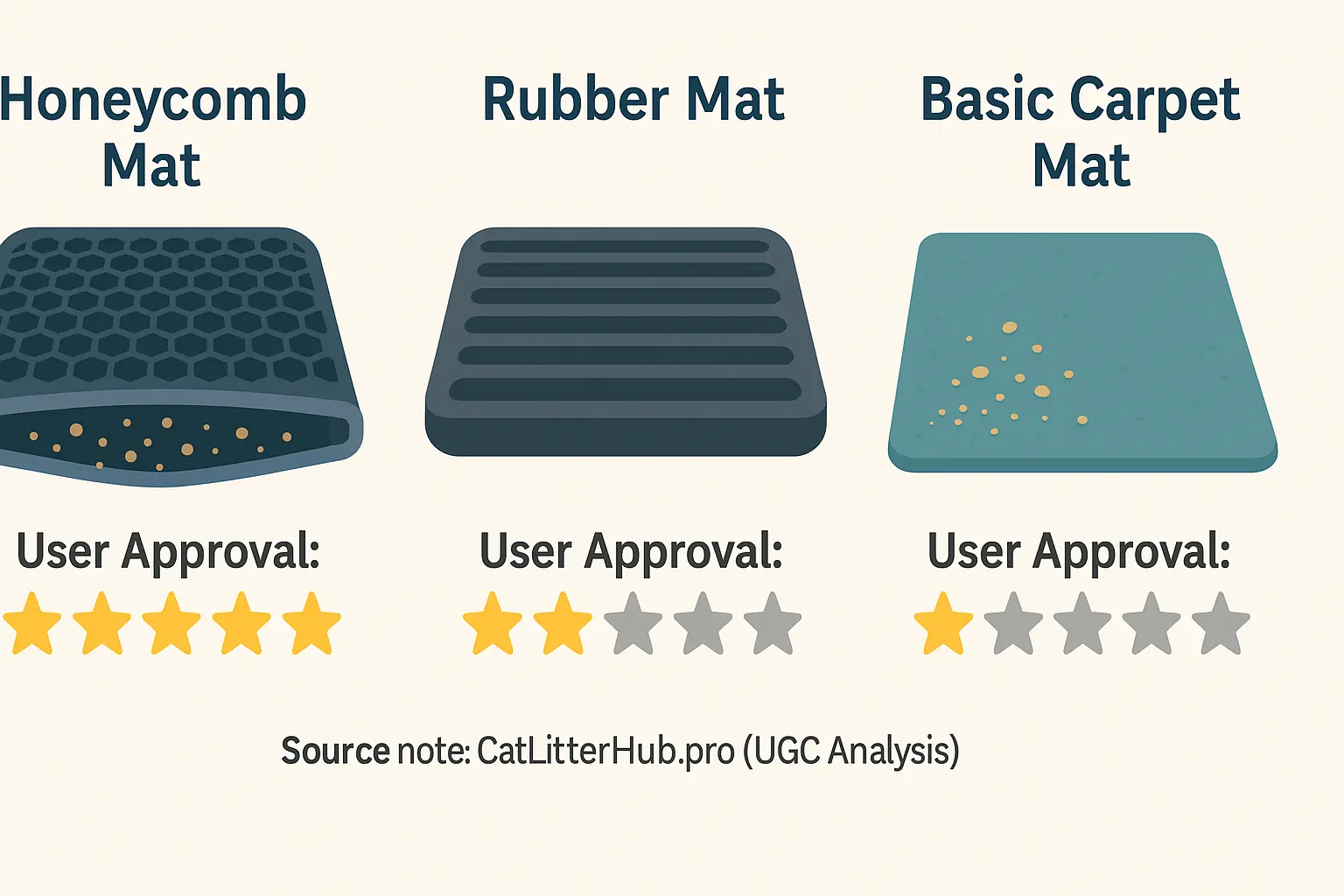
Litter mats are your first line of defense. They guard floors against tracked litter. But do they ALL work? Users say a resounding NO. Finding an effective mat is a common owner struggle.
Honeycomb mats earn widespread user approval. These dual-layer designs trap tracked litter exceptionally well. Many owners swear by them. Litter falls through the top layer's holes. It gets caught in the bottom layer. One happy cat owner exclaimed, "Finally, a mat that actually HOLDS the litter instead of just moving it around!" The consensus from owner reviews suggests the deep pockets are the secret. This design means less sweeping for you.
Rubber mats can be a mixed bag, according to feedback. Their heavily textured surfaces often catch larger litter particles. This is a plus. However, users frequently report cleaning challenges. Shaking out a stiff, heavy rubber mat can be awkward. Contrast this with honeycomb mats; users often describe simply pouring trapped litter back into the box or vacuuming it. This ease of cleaning is a major deciding factor for many.
Many cheap, carpet-style mats are duds. Users frequently warn against them. These mats barely reduce tracking, countless reviews indicate. "My carpet mat just became a second, dirtier litter box," one frustrated owner shared. The collective experience of seasoned cat parents confirms this. Choosing the right mat, based on what actually works for other owners, makes a huge difference. It’s a small investment for a much cleaner home.
Strategic Command: Litter Box Placement & Design for Minimal Scatter
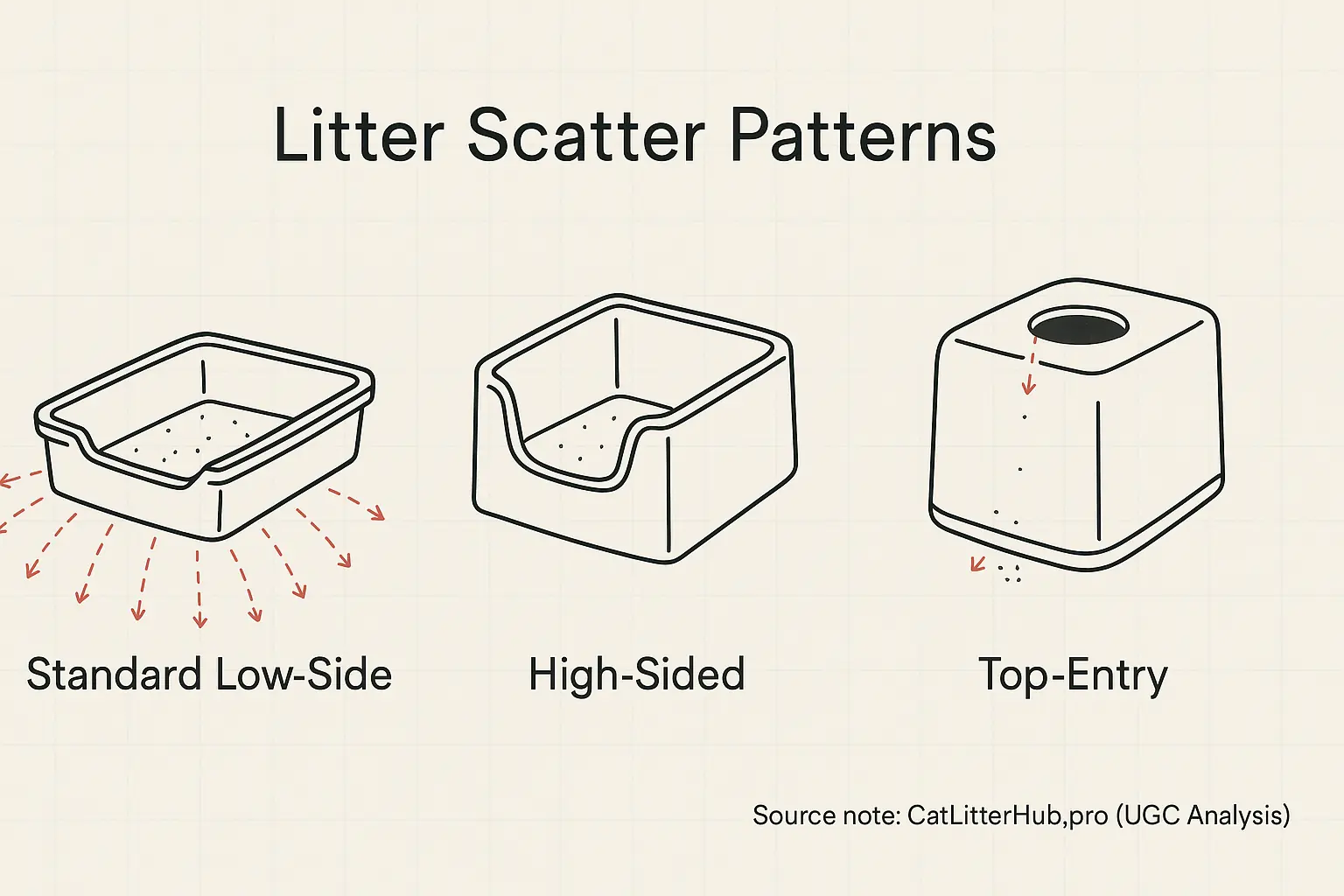
Litter scatter frustrates owners. Choosing the right litter box is only half the battle, many users discover. Your litter box's location and its actual design play an enormous role in containing those pesky granules, according to widespread owner feedback. Think strategically.
User experiences highlight specific placement wins for scatter control. Many cat owners report that placing the box in a lower-traffic zone significantly cuts down on widespread tracking. Laundry rooms often work well. A dedicated corner, away from main pathways, frequently contains the mess better, users find. Some savvy owners even create a "landing strip" using a large mat. This gives paws more surface to shed litter before reaching clean floors. Conversely, tight corners can encourage cats to kick litter outwards; a common complaint in reviews.
Box design itself offers powerful anti-scatter solutions, users confirm. High-sided litter boxes earn consistent praise from owners whose cats are enthusiastic diggers, effectively keeping litter inside. A true lifesaver for some. One owner shared, "My cat used to redecorate the room with litter. The high-sided box was a game-changer!" Top-entry litter boxes also gather positive mentions for tracking control. Their top surface can act like a built-in mat, many reviewers note. Cat acceptance for top-entry varies, however. Some love them. Others refuse. Hooded boxes get mixed feedback; they contain some scatter but can trap odors, and some cats dislike the confinement.
Guerilla Warfare: DIY Containment Systems & User-Invented Hacks
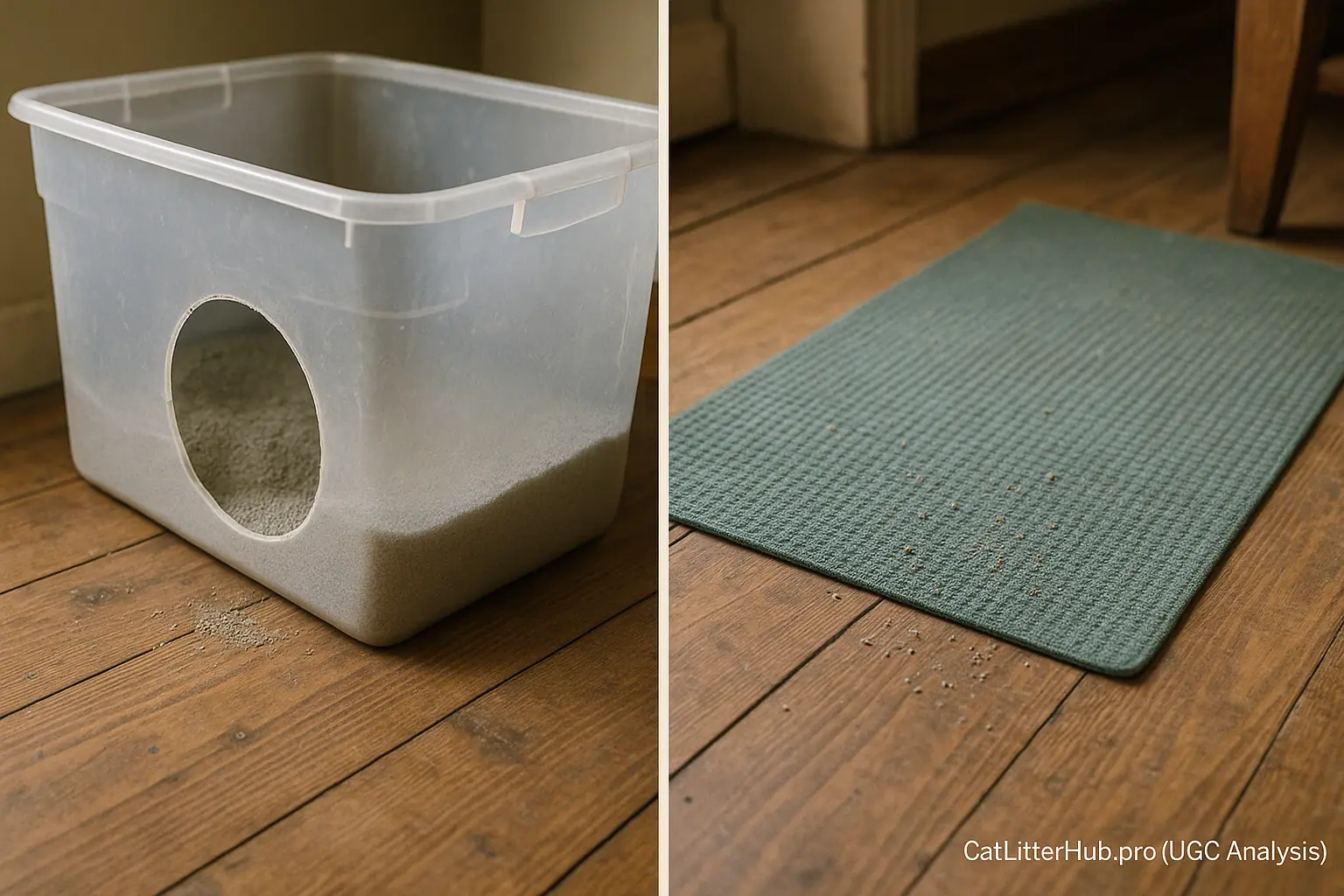
Cat owners wage clever guerilla warfare against litter scatter. Their ingenuity? Astounding. User-generated solutions for litter tracking showcase incredible creativity. These DIY hacks, shared across online communities, provide practical, field-tested answers. Many are surprisingly low-cost.
One popular strategy targets high-flying litter. Numerous cat parents report transforming large plastic storage bins into fortress-like litter boxes. They cut an entry hole into one side. This creates an exceptionally high-sided container. The result? Significantly less scatter. It's a clever, budget-friendly fix.
Resourceful owners also repurpose everyday items for litter trapping. Old yoga mats gain new life. Certain types of doormats, like coir or ribbed textures, become super-sized litter mats. User feedback suggests these often outperform specialized pet products. They can be larger. They can be cheaper. One owner mentioned a five dollar hardware store mat worked better than a pricier pet store option. A crucial note from our analysis: always verify any DIY materials are non-toxic and safe for your cat.
The Fur Factor: How Grooming (Yours & Theirs) Impacts the Tracking War
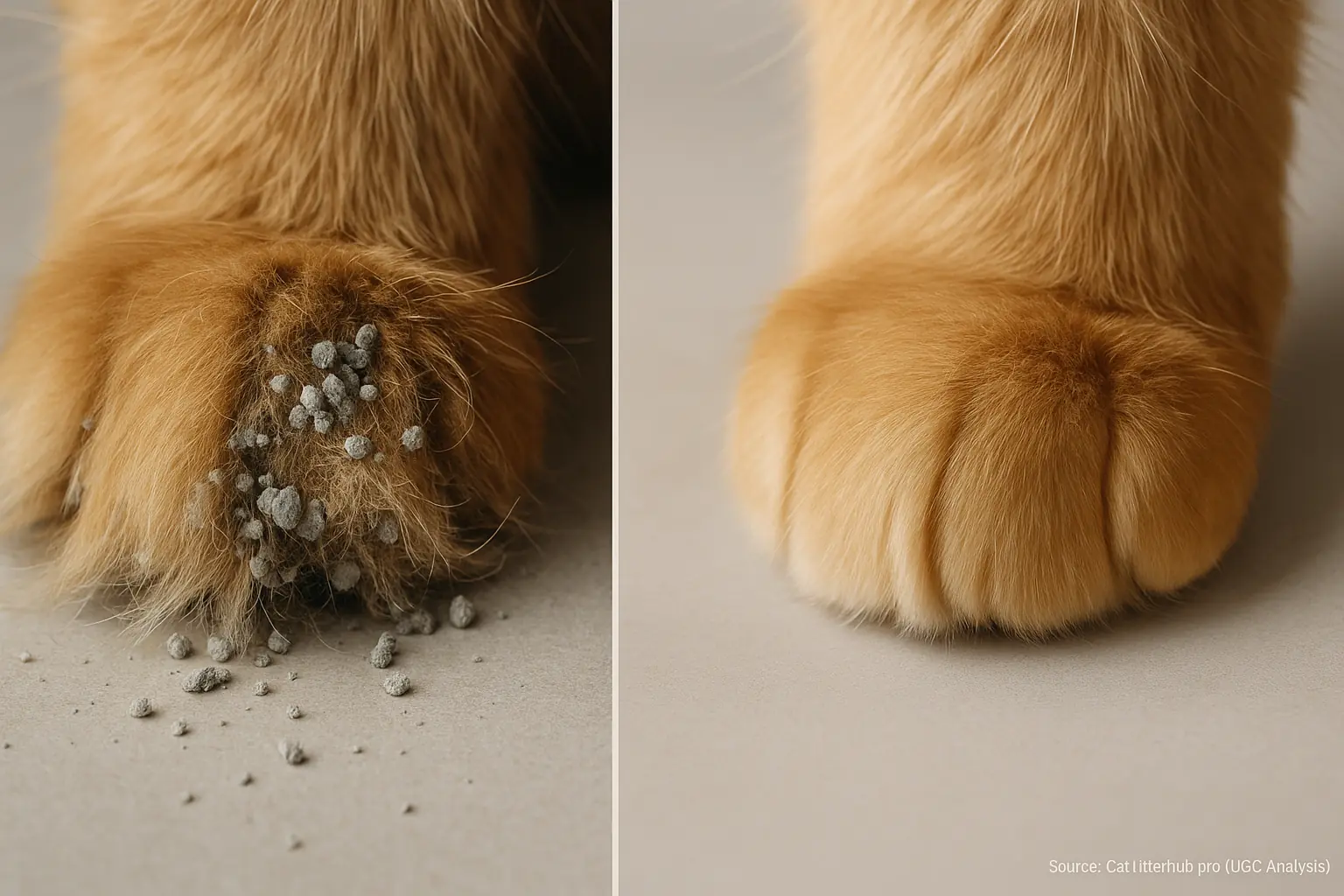
Cat fur type directly impacts litter tracking. That’s a recurring observation from countless owner experiences. Long-haired breeds, users consistently highlight, act like unintended mops for litter particles. Their luxurious coats readily snag granules. These then travel. One common report from users illustrates this point vividly. An owner compared two cats: a sleek short-hair and a fluffy long-hair. Both used the exact same litter. The long-hair, however, became a tracking champion, clearly underscoring this 'fur factor'.
The solution isn't just a better litter. Your actions play a pivotal role. Many cat owners discover that consistent grooming slashes tracking. This particularly applies to long-haired felines. Brushing their 'pantaloons' and paw tufts makes a clear difference. A quick daily paw wipe? Some users swear this simple habit drastically cut down tracked litter. Beyond the cat, your cleaning routine is crucial. Frequent, targeted cleanups around the litter box are essential. Think a two-minute daily sweep. This small effort, according to numerous user accounts, contains scatter far better than sporadic deep cleans. Managing tracking truly is a combined effort between product, pet care, and your routine.
Deploy Your Defenses: Build Your Custom Anti-Tracking Battle Plan!
Build Your Anti-Tracking Battle Plan!
Did you craft your personalized Battle Plan with the tool above? It delivers targeted advice. This advice stems from real user successes. Your unique situation gets unique solutions. It is a smart first step.
The community experience shouts one clear message. Multiple strategies usually defeat tracking. Think layers of defense. A great mat, the right litter box, consistent habits – these combine powerfully. Many users discover even minor tweaks suggested by the tool dramatically cut down litter trails. A cleaner home is achievable.
Winning the War, One Paw Print at a Time: Your Ongoing Mission
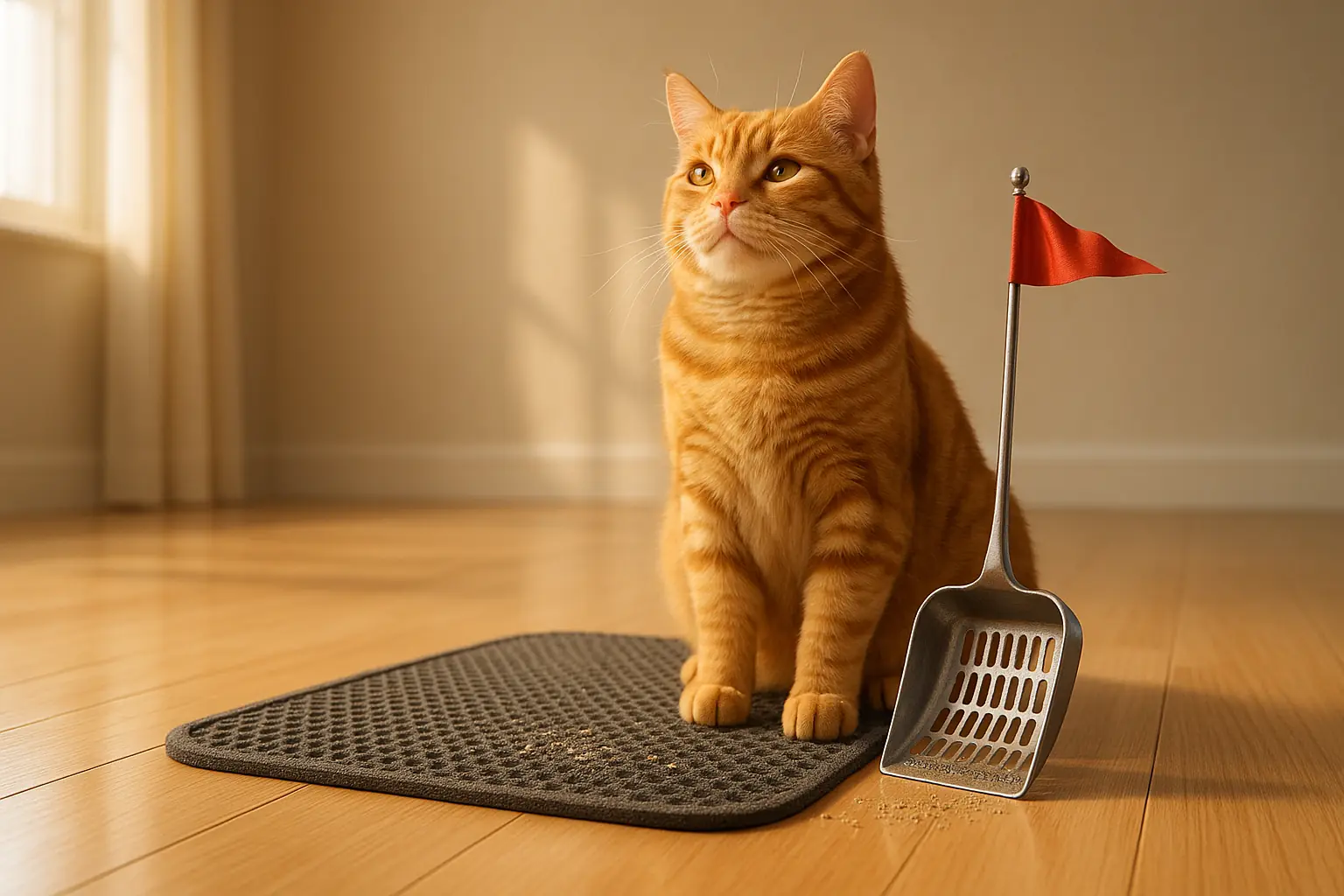
Litter tracking often feels like a relentless fight. Many cat owners share this sentiment. Is one hundred percent elimination possible? User feedback suggests rarely. However, significant reduction is absolutely achievable. Countless owner experiences, shared widely, confirm this. The strategies detailed on this page distill that powerful, collective wisdom, showing what truly works.
What's your next move in this ongoing mission? Experiment. Cat owners consistently report that finding the perfect tracking solution involves trying different tactics. Your cat is an individual. Your home environment presents unique challenges. Continuous small adjustments are vital for long-term success. Vigilance, as many users stress, truly pays off in maintaining cleaner floors.
Armed with these user-fortified strategies, you are now better equipped. Thousands of cat parents demonstrate daily that a cleaner home is within reach. Go forward. You can win this war, one paw print at a time, and reclaim your space.
Related Insight: Cat Litter Mats: The Hidden Dirt & User Truths About What REALLY Works (And What's a Waste)
Many cat owners rely on litter mats. They expect mats to solve tracking. But a hidden issue often surfaces. Users discover surprising amounts of dirt and bacteria lurking within mat fibers, even in high-quality ones. This accumulation happens if cleaning isn't thorough or frequent enough, a detail many learn the hard way.
What truly works for trapping litter without creating a new mess? Our upcoming deep dive into cat litter mats will expose what community experiences reveal about effective designs and essential cleaning routines. We will uncover the user truths. You will learn which mats genuinely help and which just hide the problem.
Related Insight: The Long-Hair Litter Challenge: User-Approved Litters to Minimize Tracking & Fur Matting
Long-haired cats often present a unique litter box situation. Our analysis of owner feedback reveals a common pattern: litter granules stick stubbornly to their long fur. This quickly escalates tracking throughout the house.
This isn't just about mess. Such clinging can lead to uncomfortable, even painful, fur matting. Finding litters that truly address these long-hair specific problems is a top priority for many owners.

